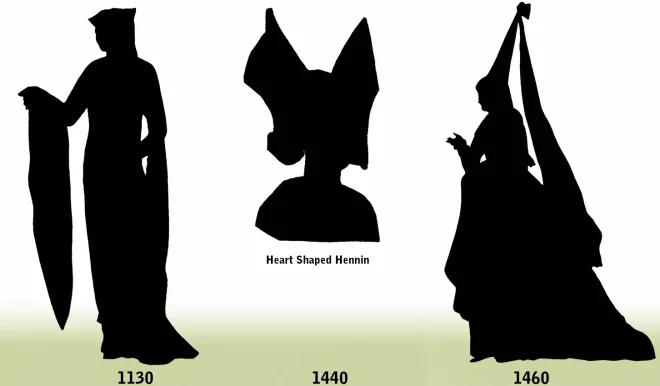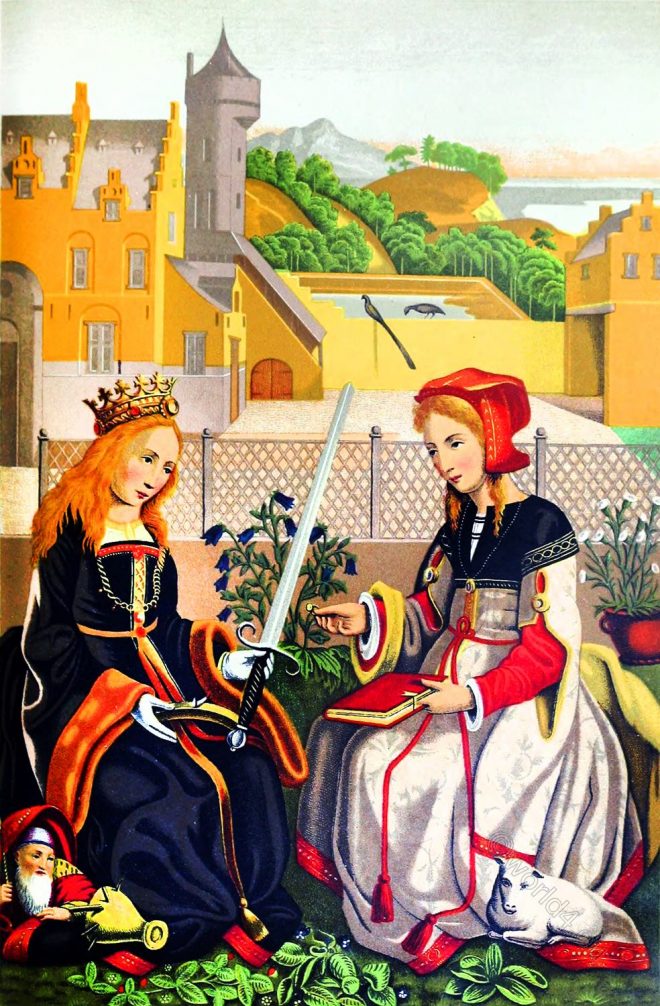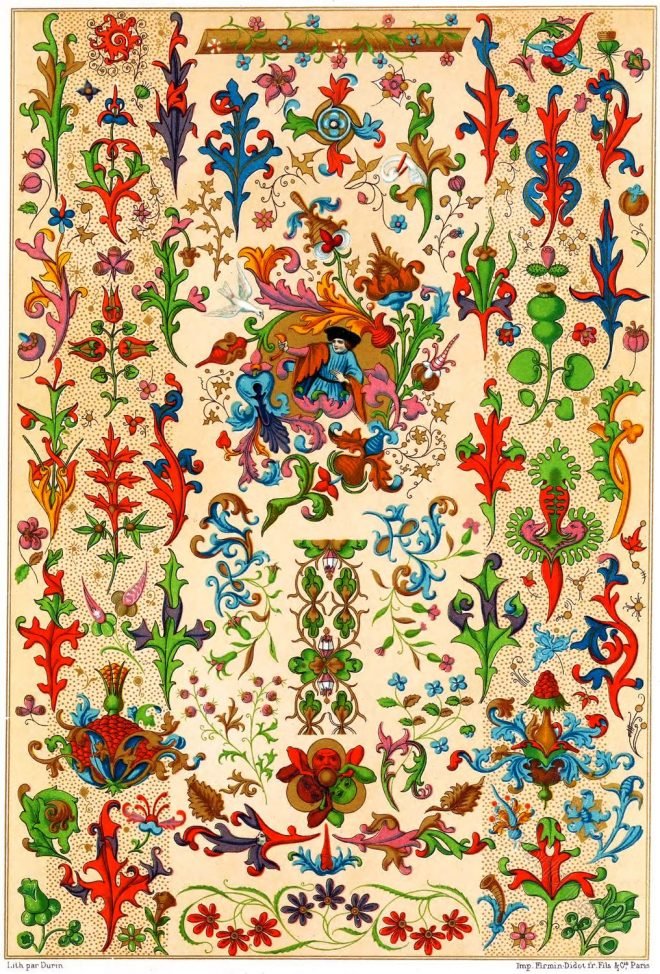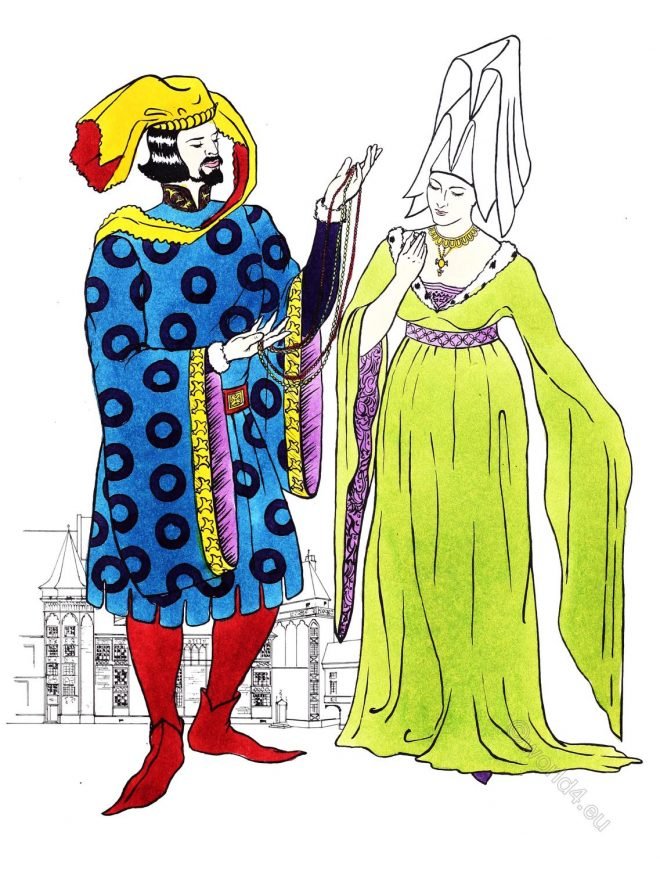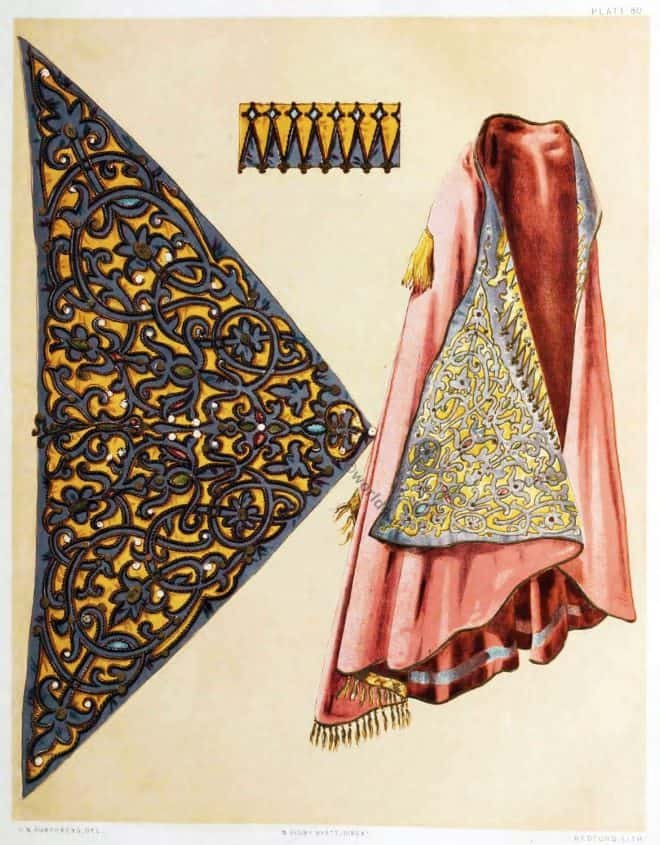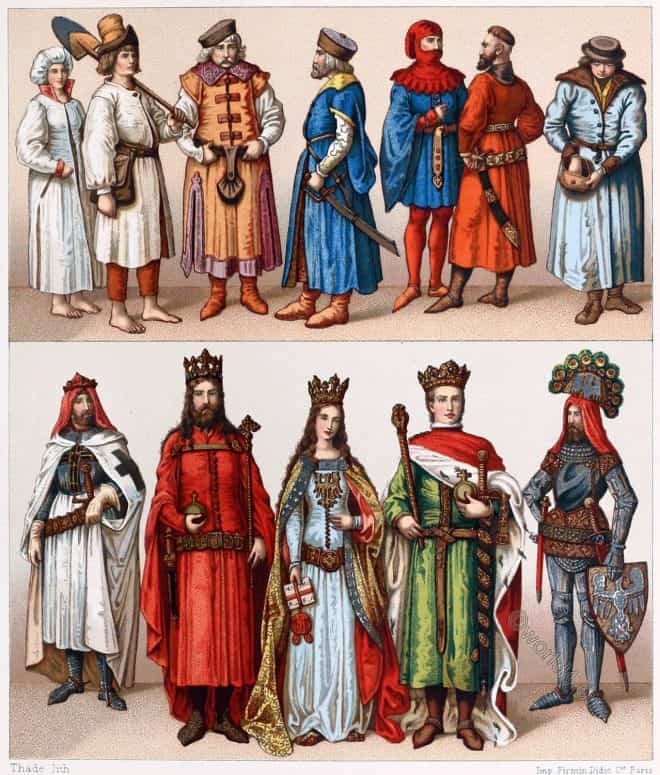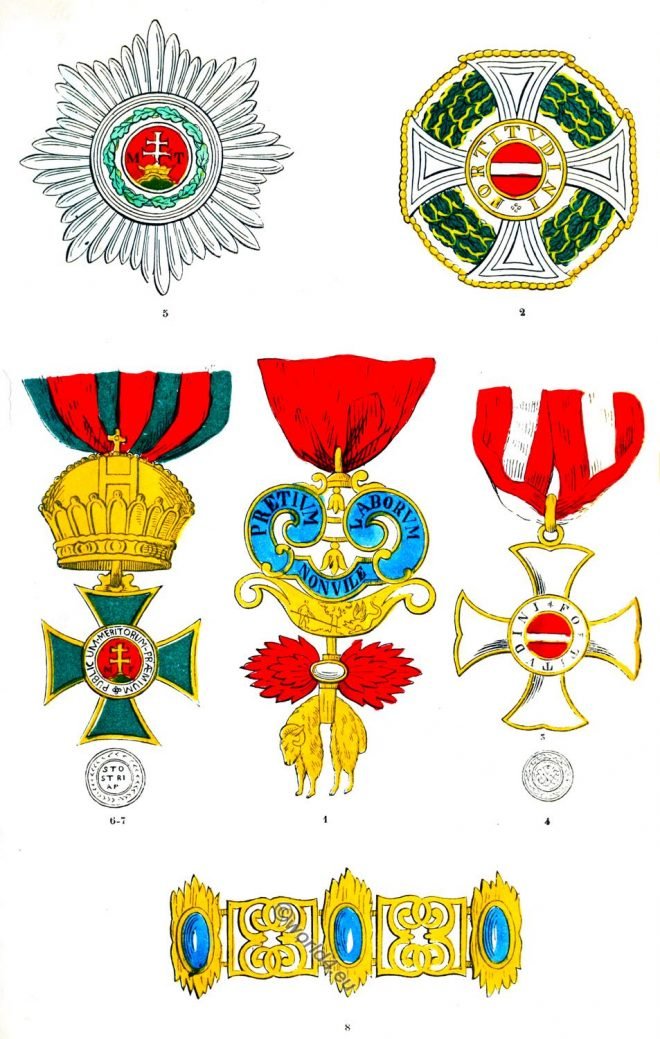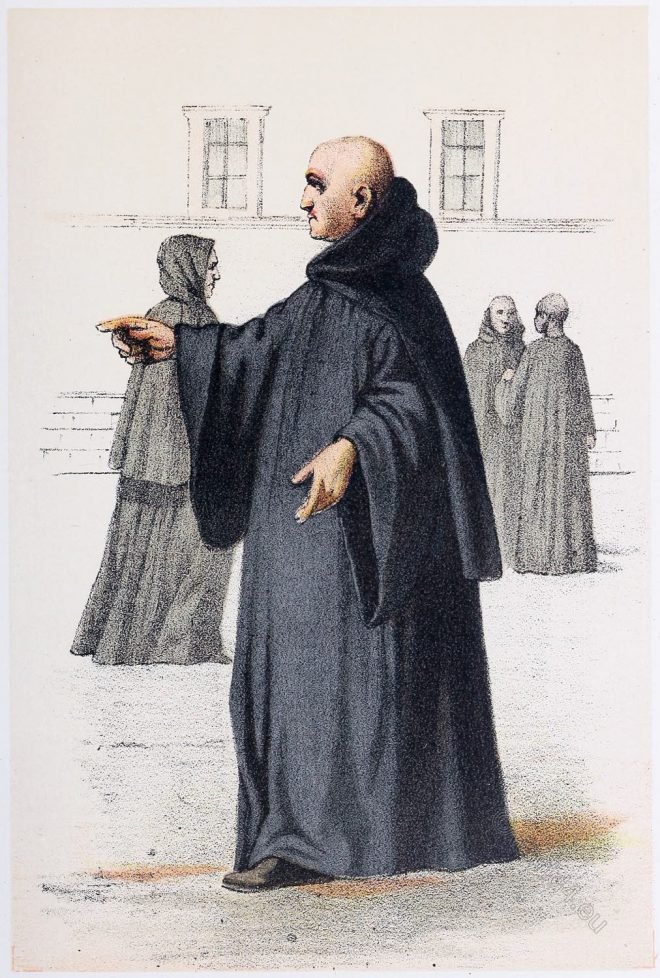This period from 1300 to 1500 was full of the eccentricities of extreme fashion.
Tag: Medieval costume
Medieval costume history. The period between the end of antiquity and the beginning of modern times about the 6th to the 15th century. It includes as superordinate, the Byzantine, Merovingian, Carolingian and Burgundian costume eras. Therein are the Gallic, Celtic, English-Saxon, Normans, Gothic, Romanesque included.
St. Catherine of Alexandria and St. Agnes of Rome.
St. Catherine of Alexandria holding in her hands instruments of her punishment. On the right is St. Agnes, and a lamb, the emblem of her innocence and gentleness.
Constance of Castile, Duchess of Lancaster with horned head-dress.
Constance of Castile (1354 – 24 March 1394) the second wife of John of Gaunt Duke of Lancaster with horned head-dress.
Conventional flora and flower work. Middle ages. 15th century.
THE details that fill the accompanying plate are too numerous for us to indicate the sources from which they have been derived, but they have all been taken from manuscripts of the fifteenth century.
The costume worn in the late 14th or early 15th century.
History of Costume. The chaperon, cote-hardie, houppelande, liripipe, poulaines. Fashion of the middle ages.
Byzantine dalmatica. Albanian embroidery. 12th century.
Chasuble. Liturgical vestment. Albanian embroidery on a twelfth-century Byzantine dalmatica.
Polish Costumes in the Middle Ages. Typical and historical figures.
Clothing in Poland in the 14th and 15th centuries. Typical and historical figures.
Austria. The Order of The Golden Fleece. The insignia of the Order.
The costume of the Knights. Decorations. The principal provisions. The insignia of the Order.
The history of the Benedictines. The Order. The Habit. The Monastery.
St. Benedict. His Rule. The habit of the monks. Propagation of the order. Cluny. Fulda. Bursfeld. English Benedictines. Benedictines in the United States.
Nuns of the order of St. Benedict. Benedict nuns of the perpetual adoration.
History of Religious Orders. The Abbaye royale Notre-Dame de Fontevraud. Early nuns of the order. Our Lady of Calvary. Benedictine Nuns of Perpetual Adoration of the Blessed Sacrament.

